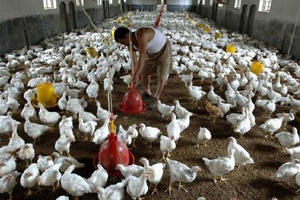Safety concerns tarnish China’s broiler production

Lower pork prices and food safety concerns over chemical residues in domestic broiler products in China have reduced demand.
According to GAIN’s Poultry and Products Semi-annual report, China’s broiler production is forecast to fall by 50,000 tons to slightly over 14 million tons.
Broiler meat imports are forecast at 270,000 tons to meet rising import demand by the processing sector for poultry products. The US export price remains competitive compared to those of major competitors, Brazil and Argentina.
Pork accounts for 60% of China’s meat protein consumption. In general, poultry is substituted as a meat protein when pork prices reach high levels. On the contrary, when those prices are affordable, consumers prefer to purchase pork products. In August 2012, the retail pork price fell by 24% to 22.94RMB ($3.65) per kilogram.
On February 18 2013, China’s General Administration of Quality Supervision, Inspection and Quarantine (AQSIQ) and the Ministry of Agriculture (MOA) suspended poultry imports from the State of New York due to an outbreak of low pathogenic avian influenza (LPAI). Traders note that this suspension is not expected to impact US poultry exports to China.
Over the past few years, Japan has lowered its import tariff for Thailand’s broiler meats. The import tariff for Thailand’s broiler meat was recently reduced to 2%. Meanwhile, China’s cooked poultry tariff remains at 6%, which is less competitive to Thailand’s broiler meats.
OAA/Beijing understands that the European Union implemented a new import quota policy which added products containing broiler meat (at or below 57%) and duck meat to the amount subject to quota.
In addition, sources note that the majority of the import quota will be awarded to Brazil and Thailand. China’s poultry imports are expected to be negatively impacted by these changes. OAA/Beijing will closely monitor these policies and their potential impact to trade.













